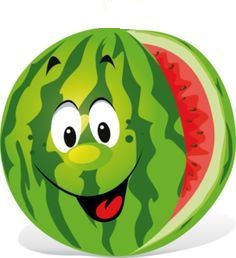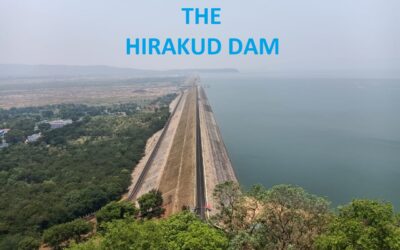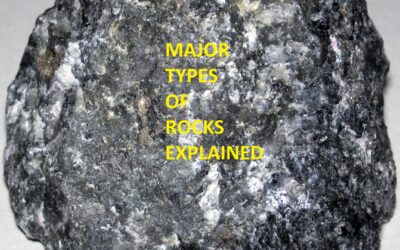Lets travel today inside our earth. Inside our earth is one of the favorite topics for all competitive exams. Why do they give so many questions from Inside our earth? Have you ever thought? It is because Inside our earth is still a Mistry. There are many facts which are unknown to us. One interesting fact is- the innermost layer of our earth is solid and it is so deep that nothing can remain there in solid form. Isn’t it interesting. Let’s reveal and find out what is there Inside our earth.
Inside Our Earth class VII Geography With Explanation, Notes and Solved Questions

Inside our earth resembles watermelon.
Interior of the Earth
The interior of the earth has 3 different layers – Crust, Mantle, and Core. The Crust is the outermost layer of the earth. Mantle is the next (second) layer and the core is the innermost layer of our Earth. This article briefly highlights the 3 different layers of the earth.
Nothing can be better than a watermelon to understand the interior of earth. The outer cover of a watermelon is very thin and Green. So is the outermost layer of our earth. We call it Crust. Where ever there is land, there it is 35 km thick. Under the oceans it’s thickness is just 5 km.
The Crust: Inside our earth
i) is the outermost solid part of the earth.
ii) It is fragile.(weak)
iii) Thickness of the crust varies under the oceanic (5 km) and continental areas (35 km).
iv) Oceanic crust is thinner as compared to the continental crust.
v) The continental crust is thicker in the areas of major mountain systems.
vi) Major constituent minerals are Silica (Si) and Aluminium (Al) . Hence it is often termed as SIAL.
The Mantle: Inside our earth
After knowing about the crust. now let’s move to the next layer of the earth. The next layer of our earth is Mantle. As you peel off the green outer layer of watermelon, you reach to the next layer which is white in colour. Also it is comparatively ten times thicker than the outer cover. So, if the crust is 35 km thick, mantle is about 3500km deep.
The layer which lies below the crust is called the mantle.
Major constituent elements of the mantle are Silicon and Magnesium and hence it is also termed as SIMA
As we go deep, it turns from solid to semi-liquid state.
Asthenosphere is the upper portion of Mantle.
It is the chief source of magma that finds its way to the surface during volcanic eruptions.
Density of Mantle is higher than the crust.
It’s thickness ranges from 10-200 km.
The uppermost part of the mantle and crust forms the lithosphere.
The Core: Inside our earth
After the white layer of watermelon, there is a third layer which is pink and becomes red as we reach to the centre. The outer core is in liquid state but the inner core is in the solid state. Isn’t it surprising. In the inner core the temperature is so high that nothing can remain in solid state but inner core is solid. How is it possible? Let’s understand this with a simple example.
The gas cylinder kept in your kitchen actually doesn’t have gas. It has liquid inside. That is why they are called as LPG (Liquified Petroleum Gas) cylinders. But, when you switch on the knob, gas comes out not the liquid. It is because the liquid is filled under high pressure. So the molecules are close to each other. When you release the pressure (open the knob), the liquid tries to come out through the gas pipe. The molecules get enough space to expand and turn into gas. In core also the materials are so tightly packed that it behaves like solid.
Features of Core:
- The inner core is in the solid (behaves as solid) state whereas the outer core is in the liquid state.
- Temperature of inner core is 5200 degree Celsius.
- The core is made up of very heavy material mostly constituted by Nickel and Iron.
- Hence it is also called the “NiFe” layer.
- The central core has very high temperature and pressure.
Rocks and minerals:
The crust is basically made up of three types of rocks. They are Igneous, Sedimentary and Metamorphic. These rocks vary in colour, texture
and size.
Igneous Rocks:
When the magma from the earth come out as lava and cool down, Igneous rocks are formed. As they are the first rocks to be formed,
therefore also known as primary rocks. Igneous rocks are of two types: i) Intrusive igneous rocks and ii) Extrusive Igneous rocks.
Extrusive Igneous rocks:
When the magma from the earth come out as lava and cool down on the outer surface of earth, it is called Intrusive Igneous rocks.
These rocks are very hard.
The whole of Deccan plateau is made up of Intrusive Igneous rocks.
(Deccan plateau was not formed by volcanic eruption. It was formed by Fissure eruption.)
The best example of Intrusive Igneous rock is Basalt.
Intrusive Igneous rocks:
Sometimes the molten magma does not come out on the earth’s surface.
Rather it cools down deep inside the earth’s crust.
Such rocks are called Intrusive Igneous rocks.
As they cool down very slowly, they form large grains.
The best example of Intrusive Igneous rock is Granite (which is also known as Gitti in Hindi used for construction purpose)
Sedimentary Rocks:
From the mountains and plateaus, rocks break into small particles due to high temperature, or rain or by the force of river water.
These smaller particles are called sediments.
These sediments are carried by wind or water and get accumulated in the sea.
When too much of sediments get accumulated at one place, they get compressed due to the pressure and weight.
When compressed, these rocks become hard and are known as sedimentary rocks.
Example sandstone.
Metamorphic Rocks:
You know that nature is not static.
It keeps on changing.
Similarly, sometimes Igneous and Sedimentary rocks go under the surface of the earth due to earthquake, volcanic eruption, landslide etc.
Due to high temperature and pressure, the rocks change their original form.
Such rocks are called Metamorphic rocks.
For example, limestone turns into Marble.
Importance of Rocks:
Rocks or stones are very useful to us. Hard rocks are used for constructing houses, roads, bridges.
Limestone is also used for whitewashing of walls and in making cement.
Soft rocks are used in making Telkom powder/ Carrom board powder.
In this way rocks play an important role in our day to day life.
Rock – cycle:
Life and death is a continuous process.
Whatever is today will not be tomorrow.
Everything weather living or non-living, has to pass through this process.
Water evaporates, turns into water droplets, fall as rain and again reaches the river or sea from where once again it will evaporate.
Children sing this prayer in school as ” सागर से उठा बादल बनके, बादल से फूटा जल हो करके, फिर नहर बनी नदियाँ गहरी, तेरे भिन्न प्रकार तू … ”
This is called water cycle.
So is true with rocks also.
First, the lava cools down to form Igneous rocks.
Then due to weathering, it breaks into sediments.
Due to heavy load sediments stick to each other.
Further, these rocks change into Metamorphic due to high temperature and pressure.
Again the new eruption will take place, lava will cool down and same process will repeat.
As per your NCERT text book, “The transformation of one type of rock into another, under certain conditions and in a cyclical manner
is referred to as the rock cycle.”
Sedimentary and igneous rocks transform into metamorphic rocks when subjected to heat and pressure.
Exercise questions: Inside Our Earth class VII Geography
1. Answer the following questions.
(i) What are the three layers of the earth?
Ans) Three layers of earth are:
i) Crust
ii) Mantle
iii) Core
(ii) What is a rock?
Ans) Any natural mass of mineral matter that makes up the earth’s crust is called a rock.
(iii) Name three types of rocks.
Ans) Three types of rocks are:
i) Igneous
ii) Sedimentary and
iii) Metamorphic rocks.
(iv) How are extrusive and intrusive rocks formed?
Ans) Igneous rocks are of two types: extrusive and intrusive.
Formation of extrusive rocks:
First, molten magma. come out through volcanoes.
When it comes out from the earth it is called lava.
Then, lava reaches the earth’s surface and cools down rapidly.
After cooling, it becomes hard and solid known as extrusive Igneous rock.
For example, Basalt.
Formation of intrusive rocks:
First, the molten magma cools down deep inside the earth’s crust.
It becomes hard and solid known as intrusive Igneous rocks.
For example, Granite.
(v) What do you mean by a rock cycle?
Ans) The process of transformation of rocks from one type to another, under specific conditions and in a cyclic manner, is called a rock cycle.
For example,
First, the lava cools down to form Igneous rocks.
Then due to weathering, it breaks into sediments.
Due to heavy load sediments stick to each other.
Further, these rocks change into Metamorphic due to high temperature and pressure.
Again the new eruption will take place, lava will cool down and same process will repeat.
(vi) What are the uses of rocks?
Ans) Rocks or stones are very useful to us.. Various uses of rocks are:
i) We can construct houses, roads, bridges with hard rocks.
ii) One can use limestone for Whitewashing of walls and for making cement.
iii) Soft rocks are useful in making Telkom powder, Carrom board powder and chalk.
iv) Use Shiny and precious rocks for making jewelry such as Diamond, Emerald.
v) It is also useful for cutting and drilling purposes.
vi) Mineral constituents present in the rocks is useful in making, Salt, medicines and fertilizers.
vii) Fossil fuels like coal, petroleum are useful as fuel.
(vi) Children use small rocks/stones in different types of games. For example (pitthu) (a popular game in India)
(vii) What are metamorphic rocks?
Ans) The type of rocks formed when igneous and sedimentary rocks are subjected to heat and pressure are called metamorphic rocks.
2. Tick the correct answer. (Inside Our Earth class VII Geography)
(i) The rock which is made up of molten magma is
(a) Igneous
(b) Sedimentary
(c) Metamorphic
(ii) The innermost layer of the earth is
(a) Crust
(b) Core
(c) Mantle
(iii) Gold, petroleum and coal are examples of
(a) Rocks
(b) Minerals
(c) Fossils
(iv) Rocks which contain fossils are
(a) Sedimentary rocks
(b) Metamorphic rocks
(c) Igneous rocks
(v) The thinnest layer of the earth is
(a) Crust
(b) Mantle
(c) Core
3. Match the following. (Inside Our Earth class VII Geography)
| (i) Core | a) Earth’s surface |
| (ii) Minerals | b) Used for roads and buildings (iii) |
| (iii) Rocks | c) Made of silicon and alumina (v) |
| (iv) Clay | d) Has definite chemical composition (ii) |
| (v) Sial | e) Innermost layer (i) |
| f) Changes into slate (iv) | |
| g) Process of transformation of the rock Rocks |
4. Give reasons. (Inside Our Earth class VII Geography)
(i) We cannot go to the center of the earth.
Ans) We cannot go to the center of the earth because:
i) To reach up to the center of the earth we will have to dig up to 6000 km. deep which is an impossible task.
ii) Moreover, the temperature at the center of the earth is 5200 °C which is too high to bear.
(ii) Sedimentary rocks are formed from sediments.
Ans) Yes, Sedimentary rocks are formed from sediments. The process is
i) Rocks break down into small fragments known as sediments.
ii) Rivers, wind and water transport and deposit these sediments at one place.
iii) However, these loose sediments tend to compress and harden over time to form layers of rocks known as sedimentary rocks.
(iii) Limestone is changed into marble
Ans) Limestone changes into marble because inside the earth there is tremendous heat and pressure. Moreover, Under such heat and
pressure, Sedimentary rock like limestone changes its original form and turn into marble.
Conclusion:
Inside our earth is written and explained in very simple language. Common and day to day life examples have been used to clear your concept. If you have understood this chapter then answer what will happen if you insert a nail or make a hole in the gas cylinder, what will come out Gas or liquid. Write your answer and send it to me. To read this chapter in Hindi click “हमारी पृथ्वी के अंदर”
If you like this article, you may share it with your friends.




0 Comments